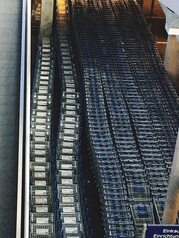The influence of lifestyle on real estate appreciation.

The life we choose, whether in a bustling urban center or in the tranquil serenity of the countryside, significantly influences the value of our properties. In this article, we will explore how the lifestyle we adopt affects real estate appreciation in Costa Rica, analyzing the differences and similarities between rural and urban areas. Discover why choosing a location not only defines your quality of life but also your future investment.
1. The dynamics of the real estate market: Rural vs Urban
The dynamics of the real estate market in Costa Rica present a fascinating contrast between rural and urban areas. In urban environments, where economic activity is more intense, there is a higher demand for properties due to proximity to services, employment, and entertainment. This results in a constant increase in the value of urban properties, attracting both investors and new residents seeking a vibrant lifestyle. However, this demand can also lead to market saturation and rising prices that may make some sectors inaccessible to certain socioeconomic groups.
On the other hand, rural areas have begun to gain attention in recent years, especially with the rise of remote work and the desire of many to escape the hustle and bustle of the city. The tranquility and connection with nature that these places offer have led many people to reconsider their housing options. Although traditionally rural properties did not enjoy the same level of appreciation as urban ones, today they are seeing growth in their value due to the search for larger and healthier spaces. This transformation presents both opportunities and challenges for current investors and homeowners, who must adapt to a new reality where rural can be as appealing as urban.
2. What does the modern buyer look for? Urban and rural preferences
In the current context, the modern buyer seeks more than just a simple property; they yearn for a lifestyle that aligns with their personal and professional preferences. In cities, where mobility and proximity to essential services are paramount, buyers value features such as access to public transport, shopping areas, and recreational spaces. Urban life attracts those looking for dynamism and job opportunities, especially among young professionals who prioritize connectivity and interaction in vibrant environments. This type of buyer is willing to pay more for properties that reflect these needs, thus increasing the value of urban areas.
On the other hand, the trend towards rural living has also gained momentum in recent years, especially following the search for a more tranquil and sustainable lifestyle. Many modern buyers are choosing to leave behind urban stress to settle in rural communities that offer peace and nature. This shift has been driven by a desire for a higher quality of life, access to open spaces, and a closer connection to the environment. Properties in these areas tend to appreciate as interest in living in less populated spaces that provide a fulfilling life experience increases. Thus, both urban and rural environments present unique opportunities for investors attentive to the dynamics of the real estate market.
3. Impact of infrastructure on value appreciation: A comparative analysis
The impact of infrastructure on property value is a crucial factor to consider when evaluating the worth of a property. In urban areas, the presence of efficient public transportation, quality schools, and shopping centers can significantly increase the appeal of a neighborhood. As new routes are developed and public services are improved, nearby properties tend to experience an increase in their value. This is due not only to the convenience these infrastructures provide but also to the growing interest from buyers and investors looking to maximize their investment in places with accessibility and adequate services.
On the other hand, in rural areas, although the infrastructure may be less dense, its development also plays a fundamental role in determining the added value. The construction of roads connecting rural communities with nearby cities or the establishment of basic services such as electricity and drinking water can completely transform the perception of the area. This attracts both new residents and potential investors interested in taking advantage of the peaceful lifestyle offered by these places. Thus, even modest improvements in infrastructure can have a disproportionate impact on real estate value, demonstrating how each element contributes to defining the economic landscape of the chosen environment.
4. Lifestyle: What does each environment offer?
Urban environments offer a vibrant life, full of job, cultural, and recreational opportunities. Living in a city can mean access to a wide variety of services, from upscale restaurants to shopping centers and cultural spaces. This lifestyle can be ideal for those who value the convenience and energy that a dynamic environment provides. Additionally, properties in urban areas tend to experience a steady increase in their value due to the ongoing demand for housing near workplaces and entertainment. However, this same demand can also lead to higher prices and an elevated cost of living.
On the other hand, the rural environment appeals to those seeking tranquility and connection with nature. Properties in less populated areas often offer more space and a serene atmosphere, which can be attractive to families or individuals who prioritize mental and physical well-being. Although economic growth in these regions may be slower, the growing demand for a more sustainable lifestyle has begun to increase real estate value in rural areas. The rise of remote work has allowed many people to move to the countryside without sacrificing their income, which positively affects the values of rural properties, making them an increasingly viable option for both living and investing.
5. Current trends in urban and rural real estate development
Current trends in real estate development, both urban and rural, are marked by a growing focus on sustainability and quality of life. In urban areas, there is a preference for projects that incorporate green spaces, accessibility, and planned communities that encourage social interaction. Developers are betting on buildings that are not only aesthetically pleasing but also offer eco-friendly features and resource efficiency. This not only attracts buyers interested in a healthier lifestyle but also increases property values by aligning with the demands of the current market.
On the other hand, in the rural context, trends indicate a search for spaces that offer tranquility without sacrificing access to basic services and modern conveniences. The popularity of remote work has led many to reconsider their usual location, favoring more natural environments with opportunities for outdoor activities. Developers are exploring housing projects that integrate technology and sustainability, which increases the appeal of these rural areas. As a result, these areas not only become viable alternatives for those looking to escape the urban frantic pace, but also experience a significant increase in their real estate value due to this new demand.
6. Economic factors that affect property valuation
Economic factors play a crucial role in property valuation, as they directly influence the supply and demand of the real estate market. The economic stability of a region is fundamental; when there is sustained growth, it generates confidence among both buyers and investors. This can translate into rising prices in areas where urban development is thriving, driven by the arrival of new businesses, services, and job opportunities. On the other hand, in rural or less developed areas, the lack of infrastructure and services can limit the increase in property values, despite their natural appeal and tranquility.
Additionally, the economic policies of the local government also directly affect real estate valuation. Tax incentives for new developments or improvements in infrastructure can make certain areas more attractive for living and investing. Likewise, factors such as mortgage interest rates impact the purchasing power of potential homeowners. In contexts where rates are low, more people can access financing to acquire properties, which raises demand and positively affects prices. In contrast, an unstable or recessionary economy could lead to a decrease in property values, affecting not only current owners but also those interested in buying a home as a future investment.
7. Nature as an attraction: Added value in rural environments
The connection with nature has become a fundamental attraction for many property buyers, especially in rural settings. Tranquility and access to natural landscapes not only enhance quality of life but also add value to properties. In areas where biodiversity and green spaces are predominant, real estate tends to maintain or even increase its appreciation. This is because more and more people are seeking to escape urban stress and find retreats where they can enjoy outdoor activities like hiking, cycling, or simply relaxing in a natural environment.
Additionally, sustainability plays a crucial role in this trend towards rural living. Many communities are adopting eco-friendly practices that not only benefit the environment but also attract a segment of buyers interested in living more consciously and responsibly. This demand for sustainable lifestyles can translate into a greater appreciation for properties located in areas that promote that connection with nature. Consequently, those who invest in rural properties may benefit not only from the appreciation of their asset values but also from a growing community focused on well-being and the preservation of the natural environment.
8. Challenges and benefits of investing in rural versus urban areas
Investing in rural areas presents a series of challenges and benefits that differ significantly from those associated with urban areas. In the rural setting, initial costs are often lower, allowing access to larger properties with greater potential at a more affordable price. However, limited infrastructure and lower demand may hinder the rapid appreciation of these investments. Additionally, access to basic services such as education, healthcare, and transportation may be less convenient compared to cities, which could influence the purchasing decision for many families.
On the other hand, urban areas offer greater stability in terms of real estate appreciation due to their constant population growth and economic development. Properties in these areas tend to experience a sustained increase in value thanks to the demand from buyers and tenants looking to take advantage of the cultural, educational, and labor offerings that cities provide. However, this urban appeal also comes with higher prices and fierce competition in the real estate market. Therefore, when considering where to invest, it is essential to weigh these challenges and benefits to make strategic decisions that align not only with your financial goals but also with your desired lifestyle.
9. Future Outlook: Where is the real estate market headed?
As social and economic dynamics continue to evolve, the real estate market adapts to the new needs and preferences of buyers. The pandemic has accelerated a trend towards larger spaces and proximity to nature, leading to an increase in demand for properties in rural and suburban areas. This shift not only affects the appreciation of homes in these areas but also redefines the concept of "home" as a place of refuge and well-being. People are now seeking environments that offer a balance between work, life, and leisure, which implies sustained growth in the value of properties that respond to these new habits.
On the other hand, urban centers remain attractive to those who value connectivity, services, and cultural offerings. However, we are likely to see more vertical development with multifunctional buildings that integrate residential, commercial, and recreational spaces. This trend may influence real estate appreciation by increasing the appeal of living in densely populated but well-designed environments. In summary, the future of the real estate market will increasingly depend on how cities adapt to emerging lifestyles, creating opportunities for smart investments in both rural and urban areas.



